I’ve always loved to read. I’m a firm believer that text is the best medium for conveying information. Lately, though, it’s quite apparent that the written word has taken a backseat to video.
Artifact — the new reading app by Instagram co-founders Kevin Systrom and Mike Krieger — aims to bring text back into the spotlight.
A new reading app is a surprising thing to see in 2023, considering the media and advertising industry’s current focus on video.
The entire app is text-based; sometimes articles have videos embedded, sure, but this is about reading.
I got access to the app this Thursday; we’ll get to my first impressions in a moment.

Over at Platformer, Casey Newton has an exclusive story about the apps’s launch with quotes from Kevin Systrom.
Newton describes Artifact as a text-based version of TikTok: the more articles you read, the more it learns about what kinds of articles you are interested in, and then it suggests similar stories to the ones you read previously.
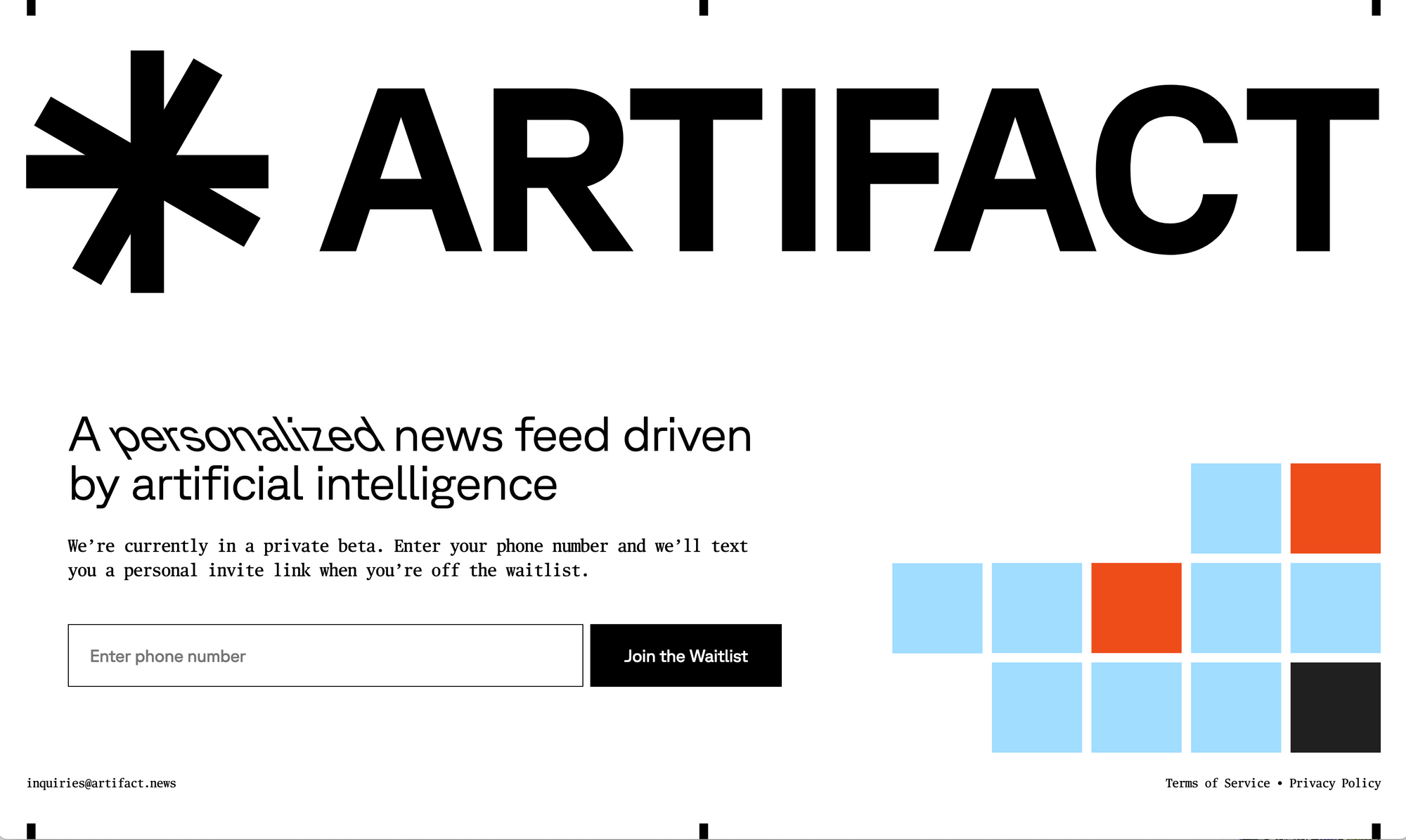
Systrom told Platformer that the app uses an “unconnected” social graph — instead of being based around a connected social graph like previous social apps which surface content your friends like, Artifact (like TikTok) uses machine learning to customize your feed exclusively based on the articles you spend the most time reading, regardless of who you follow. In fact, Artifact doesn’t have any options to follow a publication: you pick topics you’re interested in and go from there.
Why make a reading app in 2023? Again from Platformer:
Systrom told me they didn’t want to start a new company until three things happened. One, a big new wave in consumer technology that he and Krieger could attempt to catch. Two, a way to connect that wave to social technology, which he and Krieger continue to feel invested in emotionally. And three, an idea for how their product could solve a problem — Systrom has long considered technology design from the standpoint of what jobs it can do for its customers.
First impressions
I’ve been using the iOS beta since Thursday night — I’m writing this on Saturday, so it’s only been a couple of days. Artifact seems to be accepting new members quickly. A phone number is required to sign-up, and you have to use Testflight, Apple’s system for beta testing iOS apps, but setting things up was quick and easy.
“Quick and easy” is the vibe I get from this entire app, actually. The onboarding process is simple: the first time you open the app, it asks you to choose a few topics that you’re interested in... and then you’re sent right into the feed.


Left, the topic selection onboarding screen. Right, the home feed I saw when I first opened the app up.
Artifact says that after you read at least 25 articles, it can better understand the kinds of stories you are interested in.
It took me about a day to do that. I’m a big reader.
I’ve tried all the reading apps, from Google Reader a decade ago to Matter in 2022, and none of them really stuck with me, except for Twitter (if you can even call it a reading app).
Artifact is minimal, clean, and direct. There’s no bloat, no complicated features. It’s like Apple News meets NetNewsWire. I instantly felt like I understand what it does and how it works: the app makes this apparent. Most importantly, I feel like I’m finding stories I wouldn’t have read otherwise. It feels good.
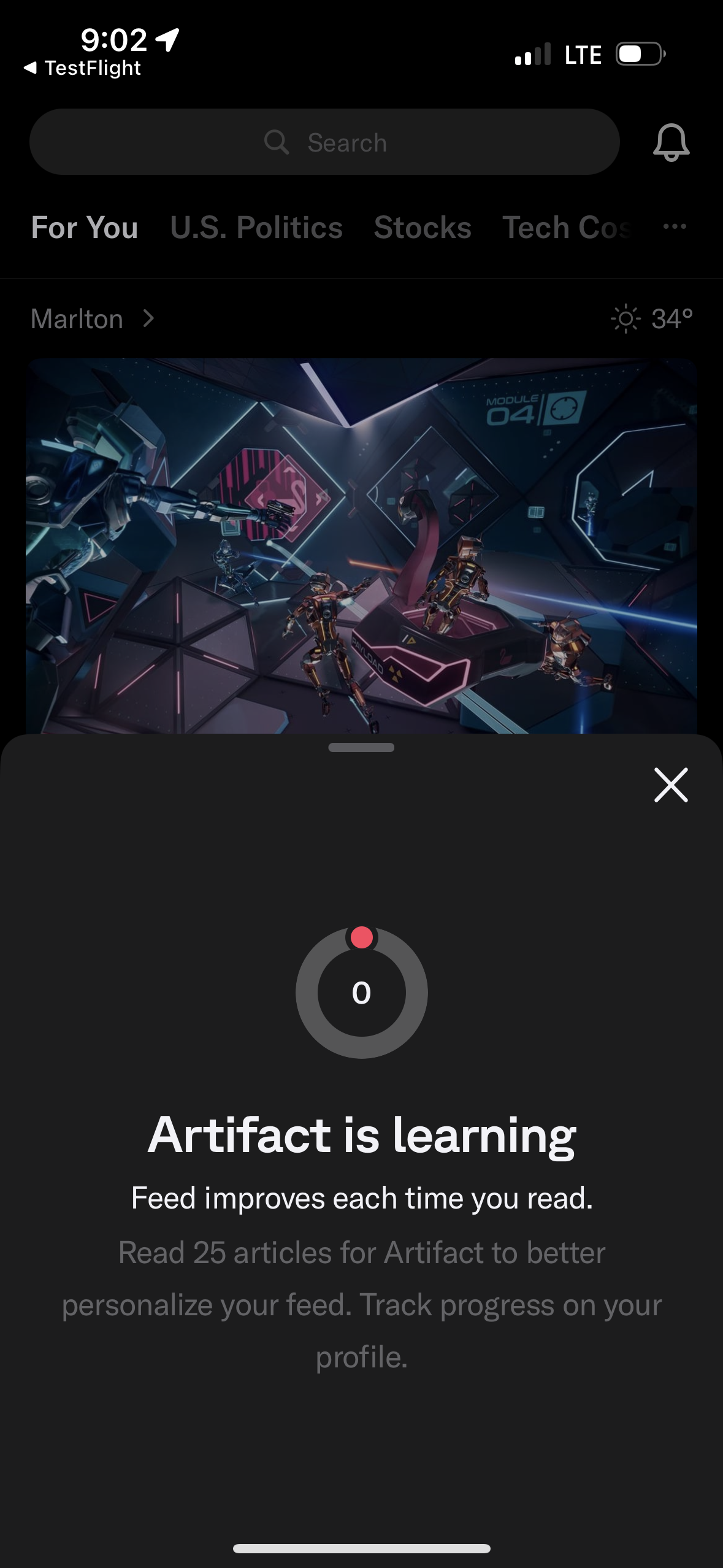
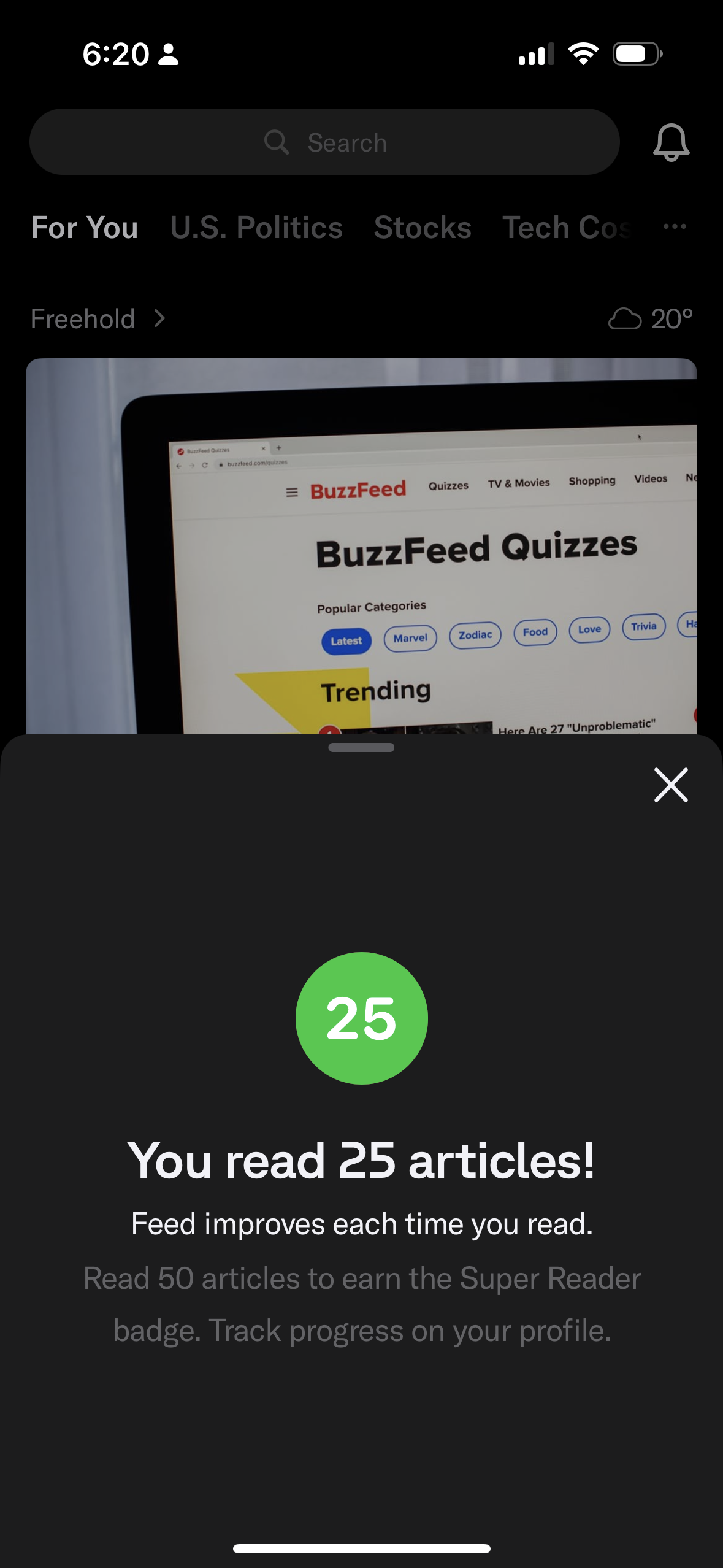
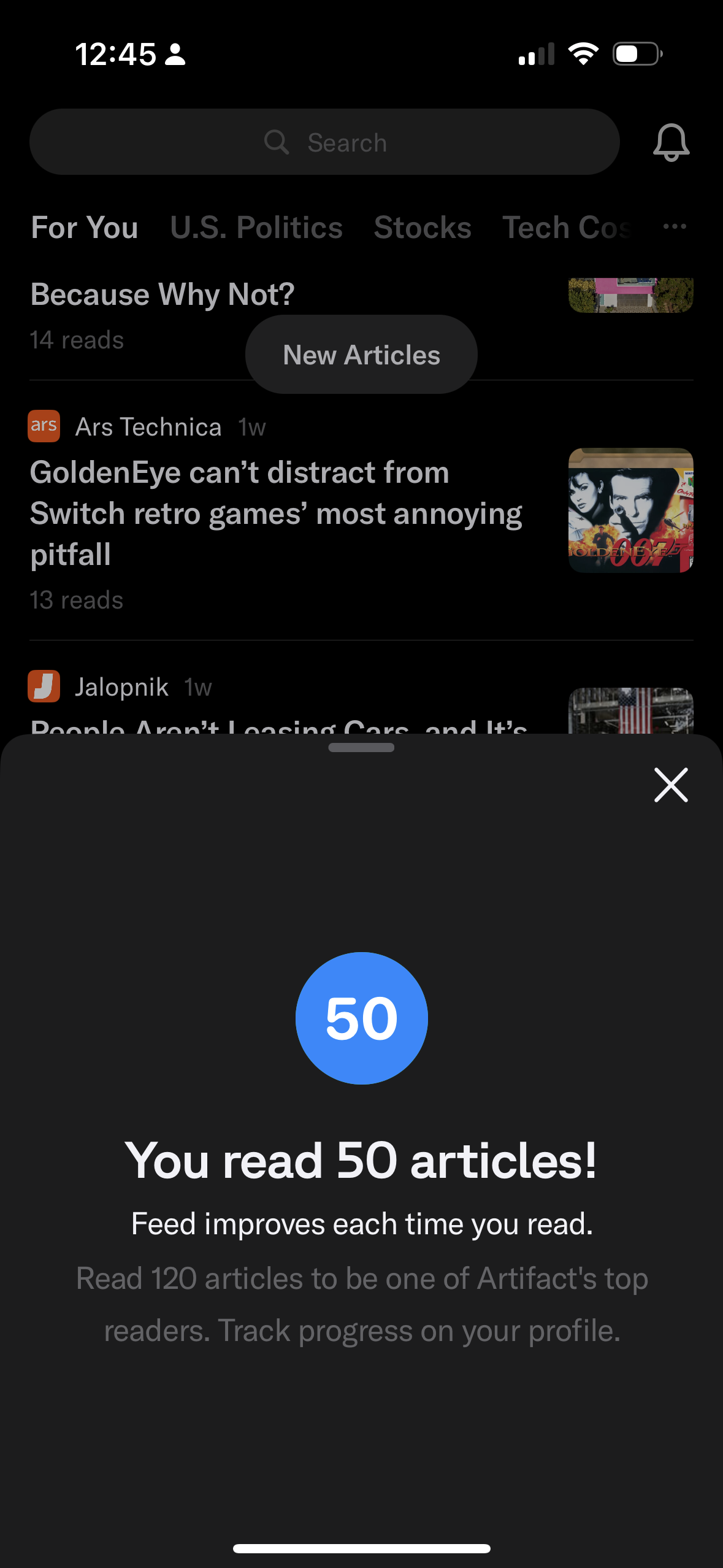
Newton observes:
Its machine-learning systems will be primarily optimized to measure how long you spend reading about various subjects — as opposed to say, what generates the most clicks and comments — in an effort to reward more deeply engaging material.
Unlike my Twitter or NetNewsWire feeds, which require constant curation, Artifact seems to do that hard work for me by learning my preferences the more I read. This is the “job to be done” that Systrom was referring to.
Discovery engine
The home page is a simple feed of headlines and images for each article.
Obviously, I’m very interested in AI: after I read 25 stories, I noticed the feed was showing me more stories about artificial intelligence. There were some funny AI stories from Vice and deep AI stories from Hacker Noon. I’m also interested in technology, tennis, and F1, so I’ve been getting more stories in those avenues, too.
The feed is straightforward. The main “For You” tab shows a variety of stories based on topics I’m interested in; then there are various tabs I can scroll through for feeds around specific topics. These topical feeds often include a Headlines section which aggregates stories on trending news of the day from various publishers, a useful way to explore different sides of each story.

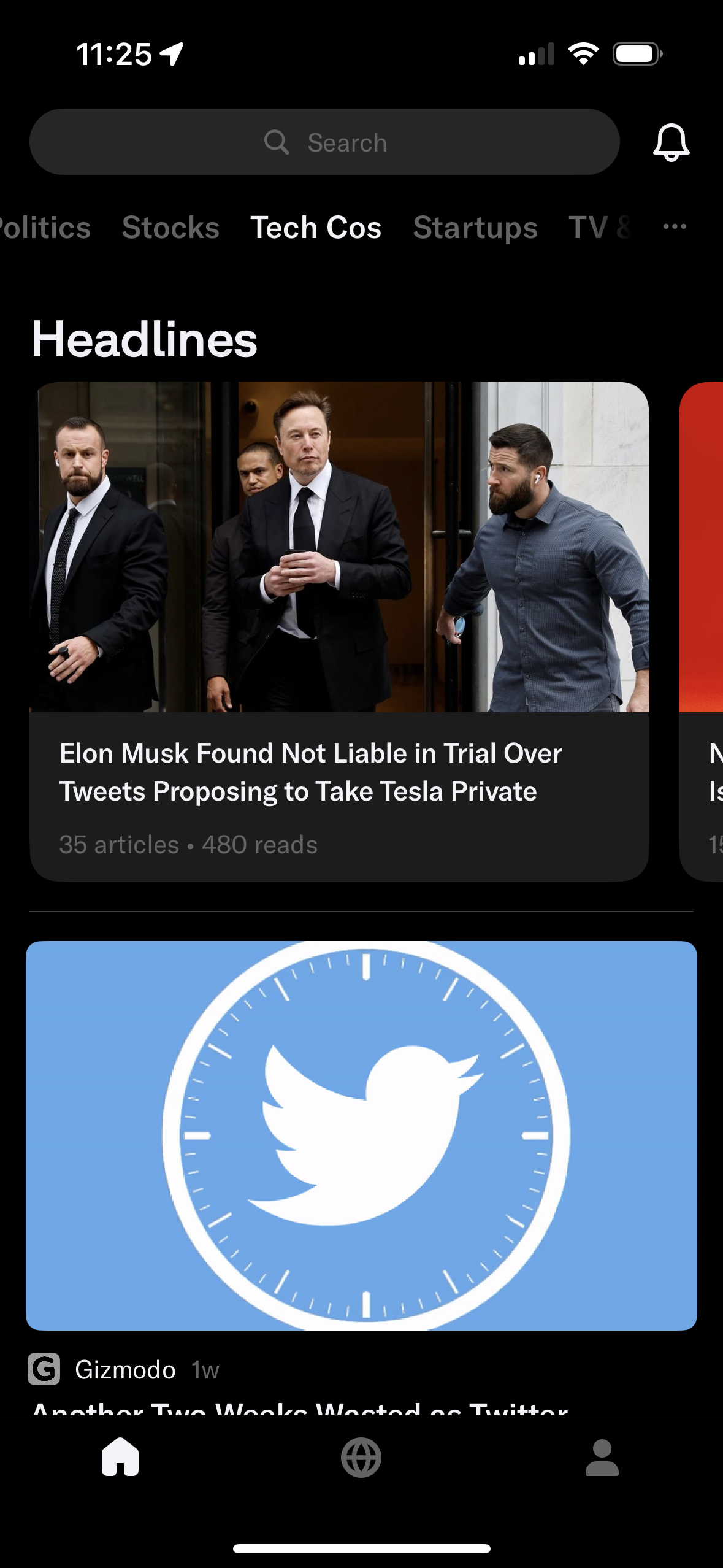

The publishers on the app are mostly larger outlets: The New York Times, The Wall Street Journal, Bloomberg, The Atlantic, The Verge, Axios, Vice, The Infatuation — even conservative publications like The Daily Wire, National Review, and Fox News are here.
(For the sake of transparency: I previously worked at both The Verge and Vice Media.)
According to Newton’s article, all of the publishers on the app are selected by Artifact. Systrom and Kreiger wouldn’t disclose a full list of publications in the app, but it’s possible to search for individual sources in the app.
I was happy to see that many of my favorite independent publications, including Stratechery, Daring Fireball, the aforementioned Platformer, and 9to5Mac were all included among the heavy hitters. There are a bunch of other indie tech and F1 websites I came across too — it’s easy to imagine Artifact will eventually help me discover new publications.
Currently, I only have three tabs in the app:
The left home tab is the feed of articles. There’s plenty of empty space to cleanly display headlines and images. As of today there seem to be only a couple of display units: a smaller format with a square thumbnail image on the right; and a larger one with a centered image and headline beneath it. There are small, thin lines between each article, and a count of how many reads there were to the article. I like this simple metric: it’s kind of like seeing view count on a YouTube video, but different since this only shows reads that happen inside Artifact.
The middle globe is for headlines, which are collections of big news stories that are happening that day or week. Kind of like a cleaner version of Twitter’s trending tab.
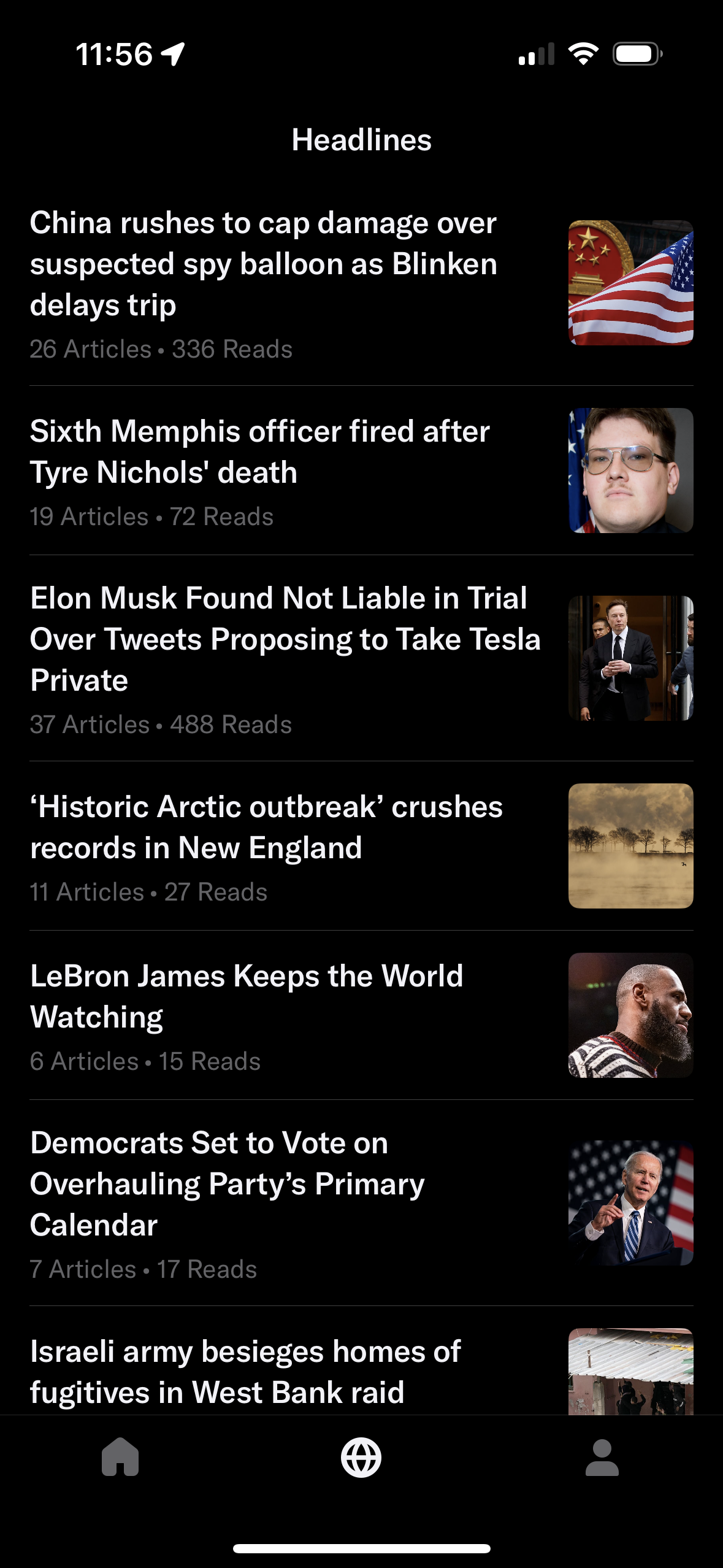


Finding an article to read from the Headlines section.
The right profile icon is for settings, reading history, and other options. I blurred out my friend’s names from the Invite section.
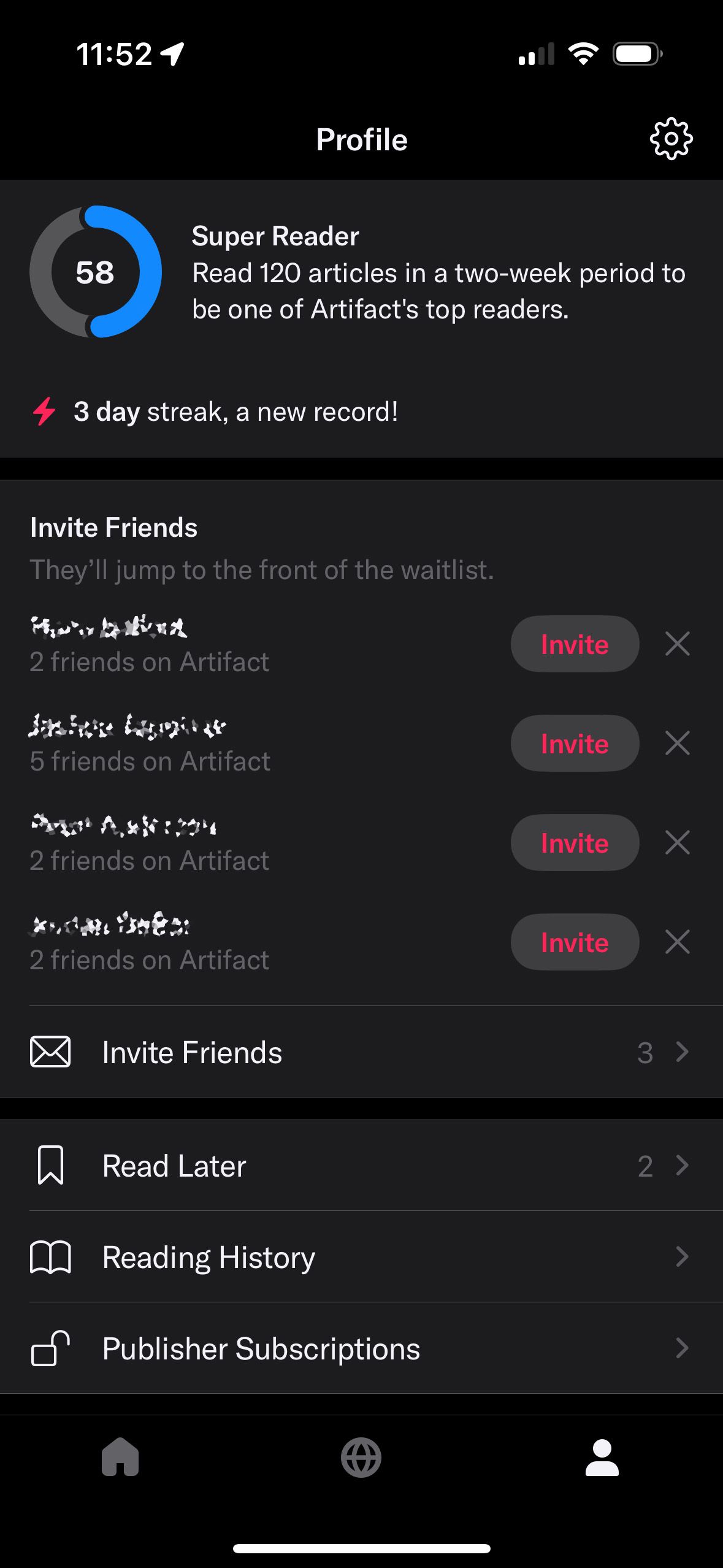

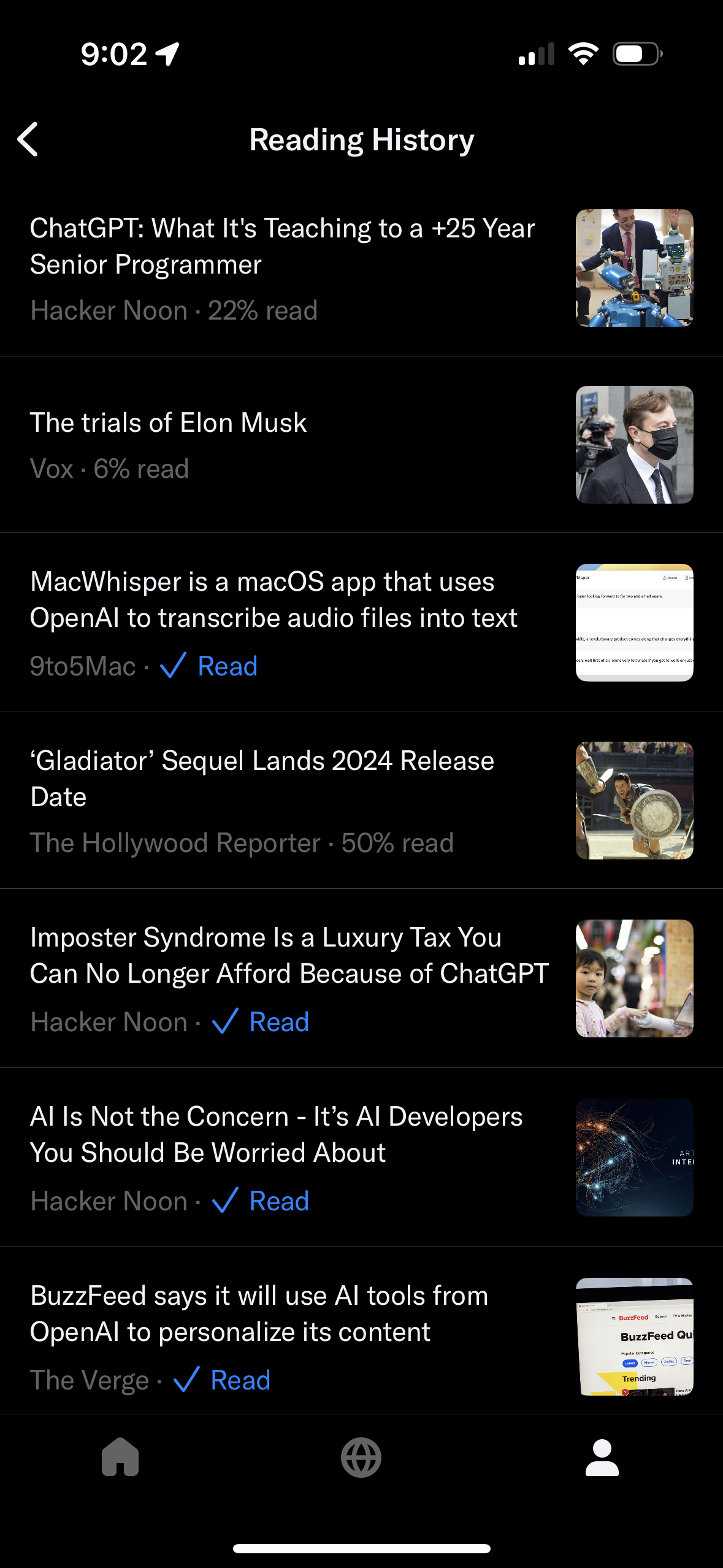
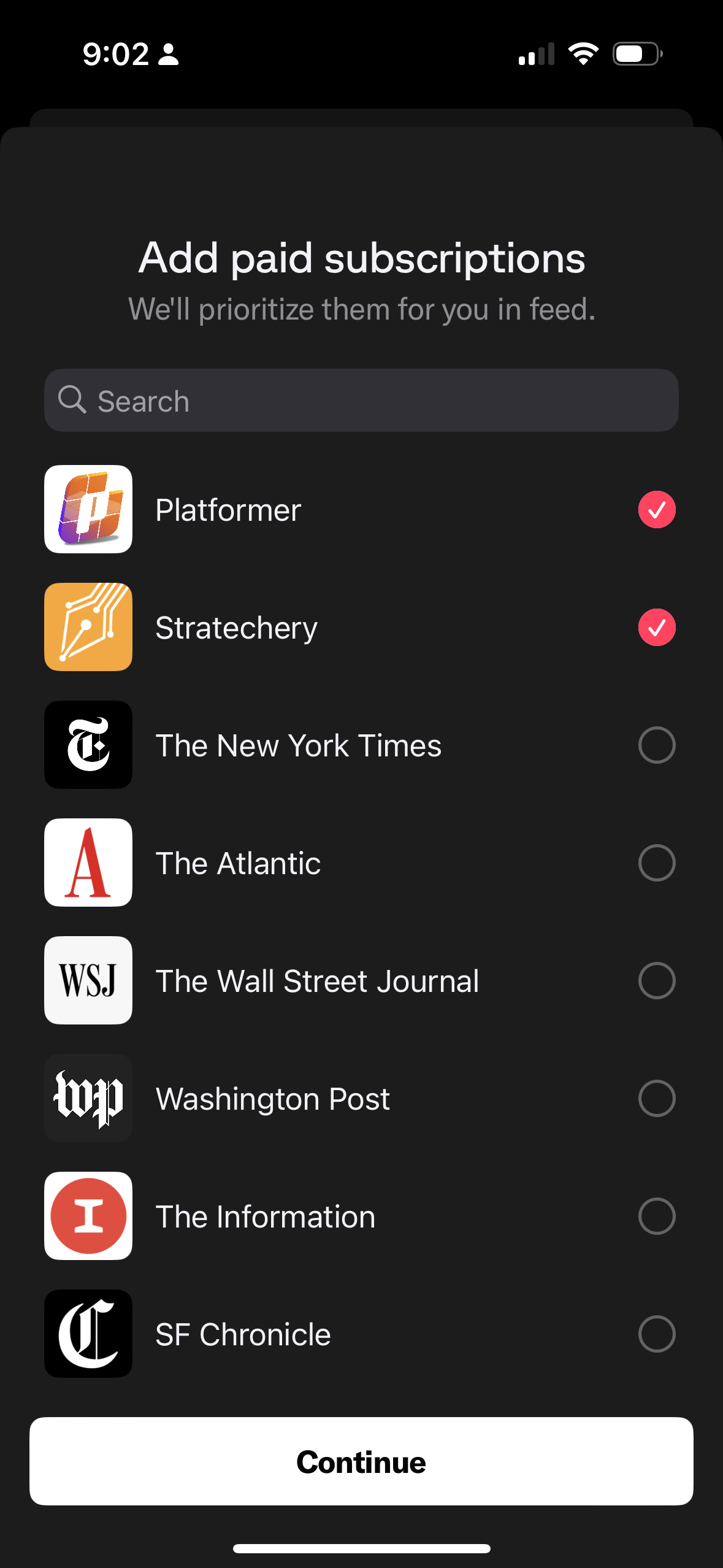
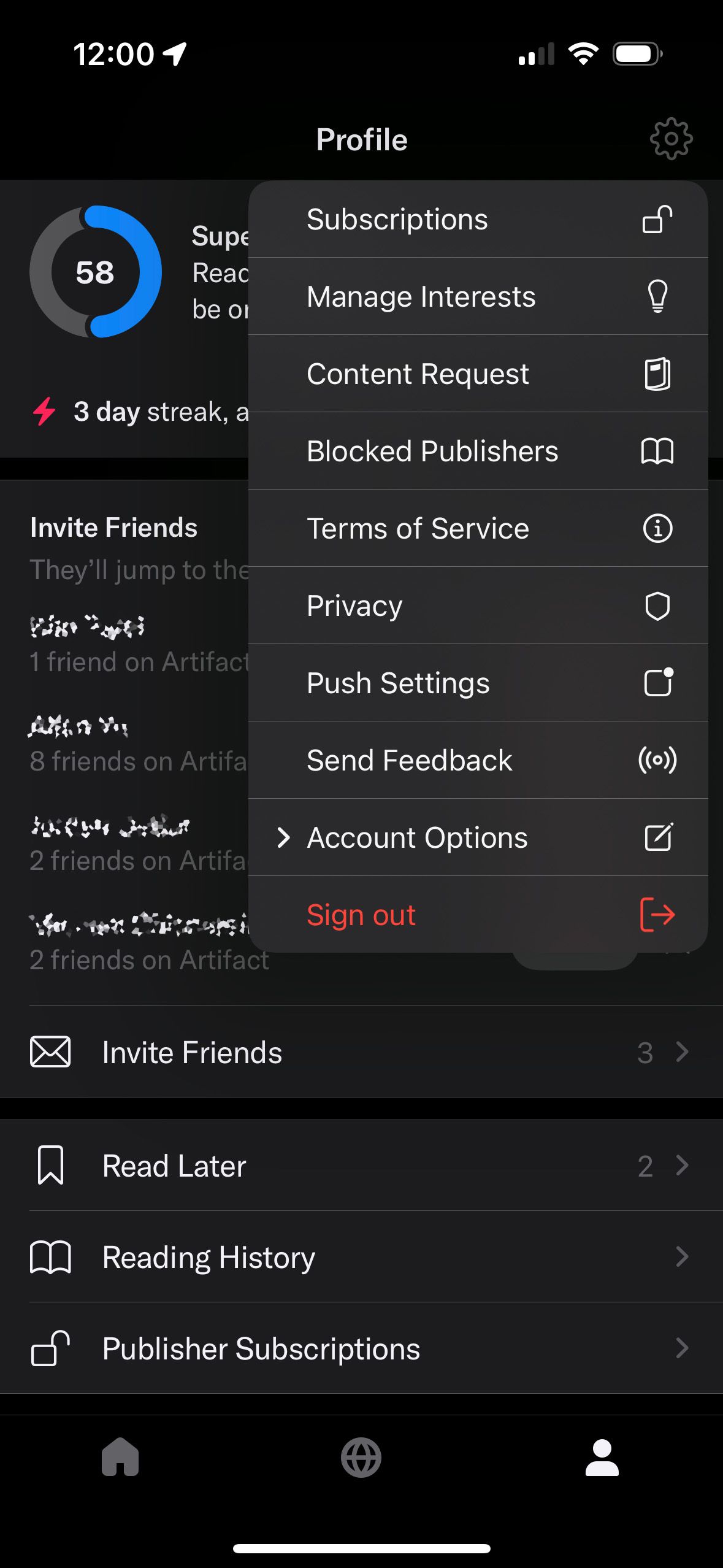
The Publisher Subscriptions section is cool; it prioritizes paid publications that you are subscribed to.
Newton’s report also mentioned that early users are testing two additional features which the co-founders expect will become “vital” aspects of the app:
Artifact beta users are currently testing two more features that Systrom expects to become core pillars of the app. One is a feed showing articles posted by users that you have chosen to follow, along with their commentary on those posts. (You won’t be able to post raw text without a link, at least for now.) The second is a direct-message inbox so you can discuss the posts you read privately with friends.
I’ll update this commentary when I get access to these features. I have a group chat with some friends where we send each other good reads; it’ll be interesting to see if Artifact’s DM feature can replace that behavior.
The app has sent me a few notifications: one of which was actually from a friend of mine who has access to the link sharing feature, but I couldn’t interact with his post. The other notifcations are for article recommendations. At one point, I shared a link from my phone to my laptop, and I saw this notification that someone opened my link.

It was me opening my own link, but if this is a preview of some of the interactions that Artifact’s social features might offer... consider me intrigued.
The reading experience
Once you tap an article, it gets opened in an in-app web browser which displays all of the ads, cookie consent notices, full screen “subscribe to my newsletter” pop-ups, and various bloat that clutters modern websites.
There’s a reader mode which hides all of that detritus — but using that feature also strips away the personality of each website. The app doesn’t remember Reader view preference between articles, perhaps in an effort to drive ad impressions to publishers.


Reader mode strips out all custom formatting — and ads — from the article to display pure words and links.
The app UI changes from light to dark depending on if your phone is in dark or light mode.
Hidden in the “other settings” area, there’s an option for “Content Requests” which seemingly allows users to submit a website to be included to the app’s suggestions. I submitted Gold’s Guide — let’s see what happens.
Curation
There are a few lightweight but direct options to tweak your feed. I disliked a couple of stories and hid a couple of publishers I don’t care for; this took a few seconds and worked as expected.
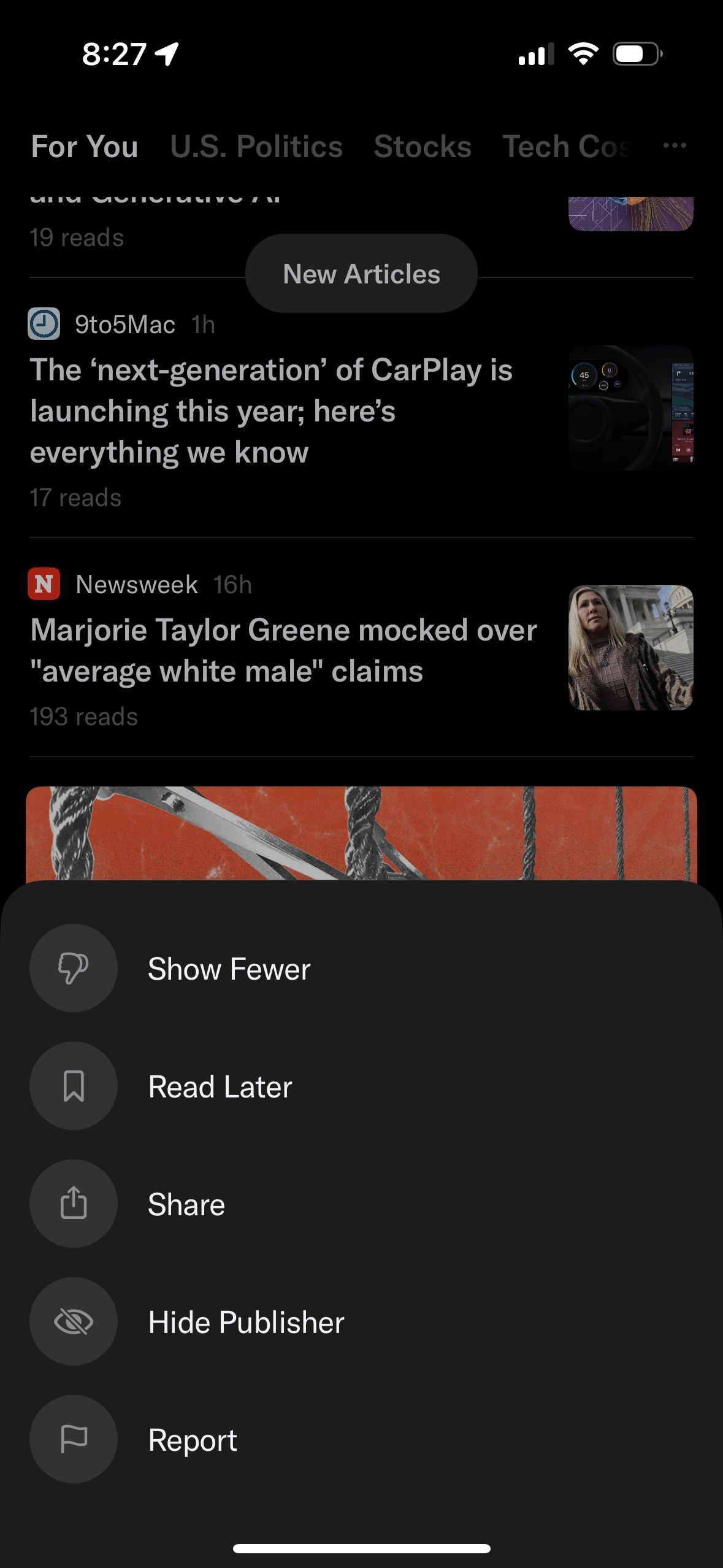


Hiding an individual type of story — or an entire publisher – is two taps away. Articles are grayed out in the feed after leaving feedback.
I have a hunch that the more stories I dislike and the more publishers I hide, the better Artifact’s recommendations will become.
I really like this so far
Haven’t felt myself actually wanting to use a new app like this in a long time. Artifact was the first app I opened up this morning, but maybe that’s because it’s still new. Time will tell how long this feeling lasts for.
The last time that I felt anything remotely similar was when Clubhouse rose to popularity at the height of the pandemic. Clubhouse was fun, but felt weirdly stressful at times.
This app feels weirdly peaceful. Maybe it has something to do with the fact that unlike Clubhouse, Systrom and Kreiger didn’t have to raise any venture capital money because they, well, created Instagram. They are not short on cash and don’t have to meet any outside expectations — the only thing they need to focus on is building the app they want.
Artifact is useful. This is the first time an app has scratched the “I want to find something to read” itch since I built my own custom news feed with NetNewsWire and Feedbin a couple years ago. Thanks to their machine-learning powered recommendations, I don't have to do any of the work to curate my RSS reading list in NetNewsWire anymore: Artifact’s artificial intelligence is doing it for me.
